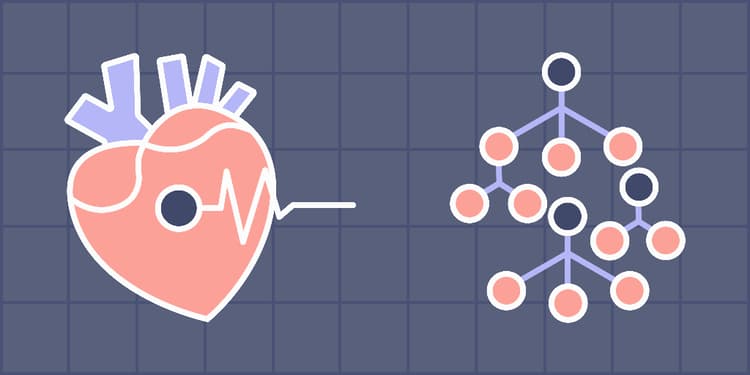This device is not compatible.
PROJECT
Cardiovascular Disease Risk Prediction with Random Forest
In this project, we’ll explore cardiovascular disease data through seaborn visualizations and predict disease risk using an sklearn-based random forest classifier considering diverse factors.
You will learn to:
Explore data using seaborn.
Work with the building blocks of a deep learning model.
Create a random forest classifier using sklearn.
Make predictions using a trained deep learning model.
Skills
Machine Learning
Data Visualisation
Data Analysis
Prerequisites
Intermediate knowledge of Python
Intermediate knowledge of seaborn
Intermediate knowledge of sklearn
Intermediate knowledge of machine learning models
Technologies
Python
seaborn
Matplotlib
Scikit-learn
Project Description
In this project, we’ll create a robust predictive model to assess the risk of cardiovascular disease (CVD) using the random forest algorithm. A well-structured pipeline will be used in our approach, including data exploration with seaborn and Matplotlib and data preprocessing with the Scikit-learn (sklearn) library.
We’ll carefully curate a relevant dataset that includes critical characteristics such as age, gender, blood pressure, cholesterol levels, and other risk factors associated with CVDs. We’ll visualize the dataset’s attributes and investigate potential relationships between variables and the target (CVD risk) using seaborn and Matplotlib. Next, we’ll use Scikit-learn’s powerful tools to perform data preprocessing tasks such as handling missing values, encoding categorical variables, and normalizing or scaling numerical attributes. This ensures that the dataset is ready for the machine learning model to be trained on.
Ultimately, our project aims to create a reliable and efficient CVD risk prediction model using the random forest algorithm. Data exploration insights and Scikit-learn capabilities will contribute to accurate risk assessments, potentially assisting healthcare professionals in making informed patient care and disease prevention decisions.
Project Tasks
1
Explore the Dataset
Task 0: Get Started
Task 1: Import Modules
Task 2: Load the Dataset
Task 3: Create the Pair Grid
Task 4: Plot the Distribution of Categorical Features
Task 5: Plot the Distribution of Numerical Features
Task 6: Plot the Relation of Factors with Diseases
Task 7: Transform the Categorical Columns
Task 8: Split the Training and Testing Dataset
2
Build the Model
Task 9: Build the Classifier
Task 10: Train the Classifier
Task 11: Get Predictions
Task 12: Print the Confusion Matrix and ROC Score
Congratulations!
Subscribe to project updates
Atabek BEKENOV
Senior Software Engineer
Pradip Pariyar
Senior Software Engineer
Renzo Scriber
Senior Software Engineer
Vasiliki Nikolaidi
Senior Software Engineer
Juan Carlos Valerio Arrieta
Senior Software Engineer
Relevant Courses
Use the following content to review prerequisites or explore specific concepts in detail.
